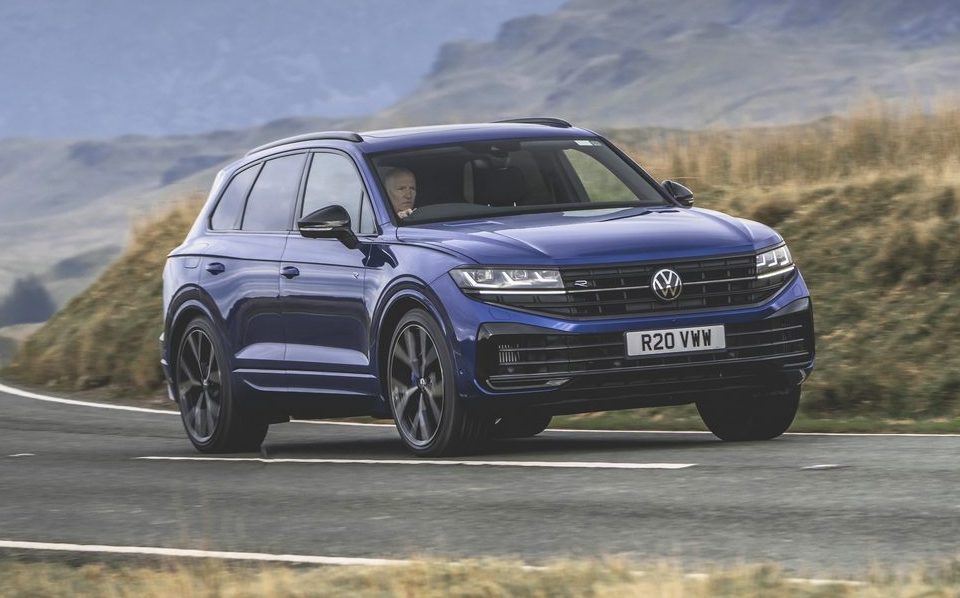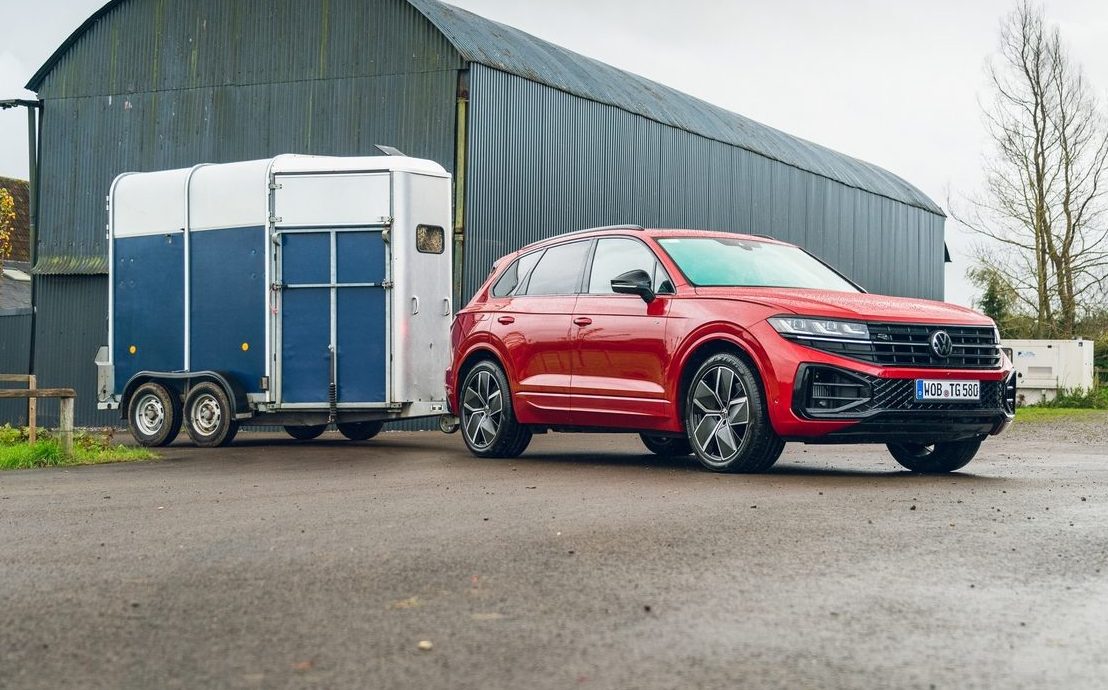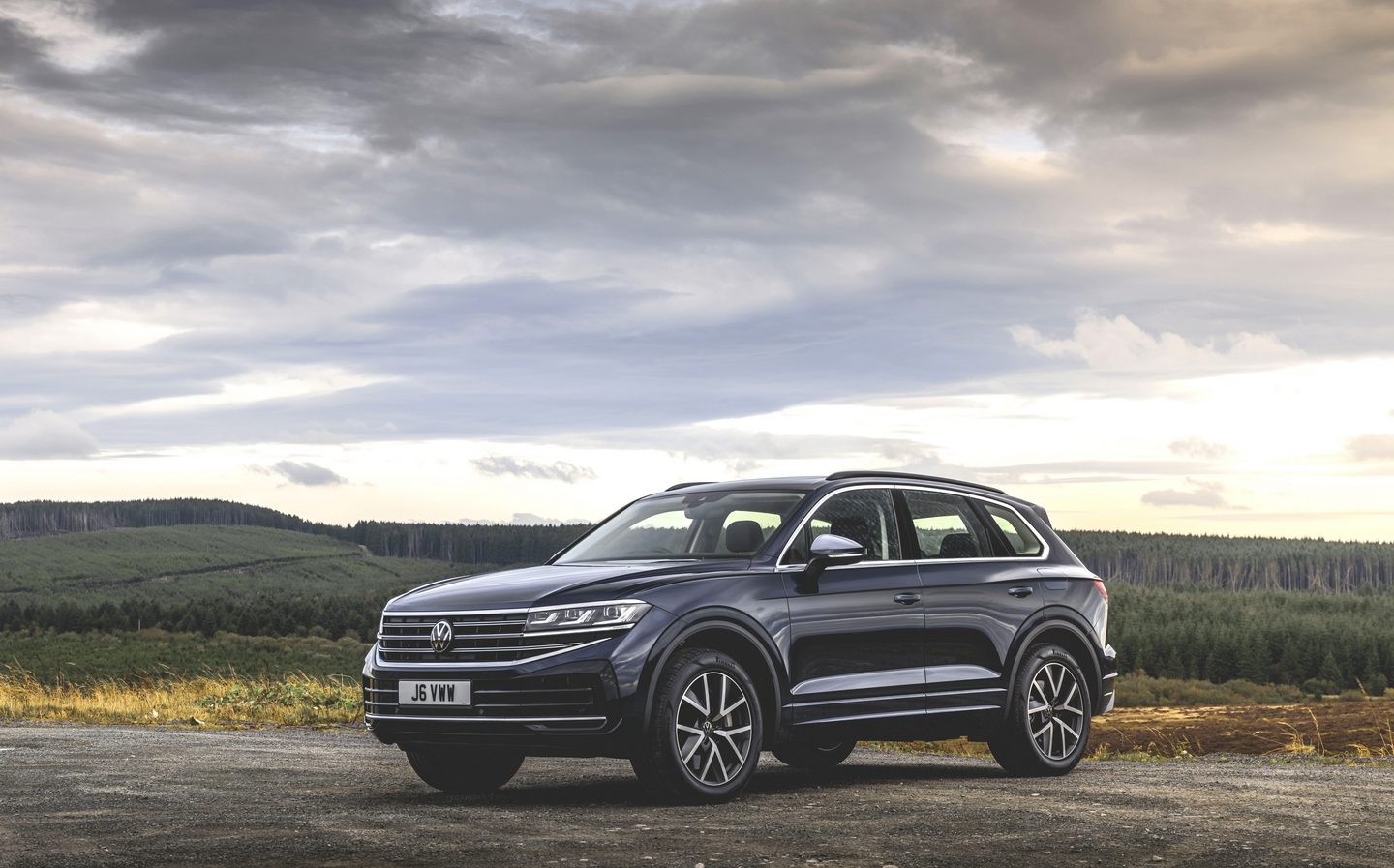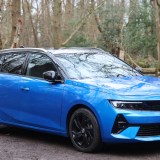Volkswagen Touareg 2024 review: Sorry, but it makes most sense as a diesel
Good, but you'll buy a Porsche
Years ago, all you had to worry about with the Volkswagen Touareg was sorting out in which order the random jumble of vowels in the middle of its model name went. But nowadays, there seems to be a more pressing matter, which is this: who, precisely, is the Touareg for?
Don’t get us wrong — we know SUVs are big sellers, and we know luxury SUVs are popular as well. But therein lies the problem. When, at upwards of £67,980, the Touareg is priced in the same bracket as rivals from brands such as Porsche, Range Rover, Mercedes, BMW and Audi, why would you go for a VW?
To find out, we’ve sampled a good 60 per cent of the revised third-generation Touareg line-up. The German company has facelifted its largest model, given the range a simpler structure and then added an additional plug-in hybrid version to the line-up, all to make the SUV more tempting for 2024 and beyond.
Prior to this update, Volkswagen offered the Touareg with a pair of 3-litre, V6 turbodiesels, a solitary 3-litre V6 petrol engine, and then the range-topping R high-performance derivative, which was based on a plug-in hybrid set-up.
All four of these units — yes, even the V6 petrol — continue into 2024, where they’re joined by a new model that features a de-tuned arrangement of the R’s plug-in powertrain.
This new TSI eHybrid 381, as it is known (the Germans do love an alluring model designation) is designed to offer an economical alternative to the pair of diesels, without all the styling, chassis and cost trappings of the flagship R.
Strangely, though, Volkswagen only sells the TSI eHybrid in a specification called Elegance. It is the only drivetrain available at this grade, and it’s also the only specification in the Touareg range which doesn’t get air suspension as standard.
Still with me? Because it gets more complicated.

The TDI (diesel) and TSI (petrol) models come in Black Edition format, which is kind of like the old R-Line trim grade, only with more… well, black on the outside. Various bits of body detailing are painted in the shade, although remnants of the Black Edition’s former R-Line alter-ego remain: you can see little R logos on the front doors and in the radiator grille, and then the same emblem is repeated often throughout the cabin.
Anyway, Black Editions — as well as the R eHybrid, which stands alone as a specification in its own right — all get air suspension. And this is an important distinction to make, because the Touareg is far, far better with this fitted.
Which rather leaves the “new” TSI eHybrid feeling a bit out of the loop in the wider scheme of things. Which is a shame because its three-figure fuel economy rating and official 31-mile electric driving range (expect less in the real world) make it privy to potential tax breaks that company car drivers, who tend to waft along on motorways and would therefore benefit from a comfier ride.

There’s another problem here. Most decent plug-in hybrids these days will have much bigger battery packs than the Touareg’s 14.3kWh effort, which VW didn’t update during this facelift. That means they can go a lot further on electric only power.
Indeed, the related Porsche Cayenne hybrids that use the very same underpinnings now have a 25.9kWh battery. That results in a potential 48 miles of zero-emission running, an official 166mpg and qualification for the first-year-free VED band as a result of its 31g/km emission rating.
The Touareg, meanwhile, can’t manage the same trick. Its figures of 126mpg, 51g/km and 31 miles (again: officially) feels off the pace in luxury plug-in SUV-land these days.

It’s the ride that’s the biggest bother with the TSI eHybrid, though. It fidgets and rumbles and thumps over poorer road surfaces, always reminding you that you’re on 20in wheels in Elegance spec. The air-sprung Touaregs are much smoother and more amenable in this regard.
There are more issues with the eHybrid, like the fact that the 376bhp drivetrain never feels that strong, despite what is an impressive-looking 5.9-second 0-62mph time.

It doesn’t feel anything like that quick in practice, though, because it is having to lug along a massive 2,443kg kerb weight — making this VW more than 300kg porkier than the TDI diesels and carrying almost 400kg of additional flab in comparison to the V6 petrol.
You also, as with so many plug-in hybrids, get a smaller boot in the eHybrid than you would in the petrol and diesel cars. It holds 665 litres with all seats in use here, which is admittedly huge when compared to some rivals. Fold the second row of seats down, and you get 1,675 litres of cargo-carrying capacity.

You can’t help but feel a bit short-changed, though, when you realise the non-hybrid Touaregs will swallow 810-1,800 litres accordingly.
Maybe the answer is to go with the R? After all, its healthier figures of 456bhp and 517lb ft make it the most powerful, feistiest Touareg in the range, reflected in its 5.2-second 0-62mph number.
And as it gets air suspension, chunkier body styling, some eye-catching 22in alloys and an interior enlivened by R-related trinkets, it certainly has greater showroom appeal than the rather demure eHybrid Elegance, which is essentially swaddled in old-fashioned chrome trim.

However, the chassis under the Touareg has never really been set up for dynamic acuity. It can leave that sort of tomfoolery to its distant cousin, the aforementioned Cayenne.
So, sticking an R badge on it and pretending that a 2,481kg plug-in hybrid SUV from the “People’s Car” company can ever be some sort of seminal driving experience is an exercise in futility.
It is quicker than the eHybrid 381, but not by enough to have you raising your eyebrows in an appreciative manner. It does handle better than the slightly loose-feeling base plug-in hybrid, but the R is still astoundingly heavy and therefore isn’t that rewarding to chuck about the place. And it does make a lot of the right noises when it’s going about its business, too, but again it’s not an automotive soundtrack that will live on through the ages.
Which then leaves us with the 3-litre TDI in Black Edition spec, because we can’t possibly recommend the petrol equivalent that has official figures of 25.6mpg and 251g/km.
You can have your turbodiesel Touareg in one of two flavours, a lowlier 228bhp entry model or the meatier 282bhp example we’re trying here.

And when you drive this thing on its air suspension with its big-hearted diesel motor burring away under the bonnet — a powerplant that society would have you believe is such an unfashionable thing these days — the Touareg suddenly starts to make a hell of a lot more sense.
This is not a sharp-handling SUV, it is one geared up for comfort and refinement. And the muscular 3-litre TDI is the absolutely perfect drivetrain to match those characteristics — it’s the automotive equivalent of pairing a fulsome Barolo with a particularly juicy fillet steak, instead of washing your dinner down with a pint of Moretti.
The progress the Touareg makes now feels effortless, because, while it’s no lightweight, in this spec the VW SUV weighs a far more reasonable 2,118kg.
That results fuel economy of an average-looking 34mpg on paper, but we got near this while unsympathetically pounding round our test route and we have no doubt 40mpg or more would be attainable on longer motorway runs.

The plug-in hybrids would never match that, once they’ve (quickly) exhausted their small reserves of battery-powered assistance. You’d be lucky to see an average 30mpg unless you charge them up ludicrously regularly.
Further, the TDI also sounds superb. There’s something about the reassuring, bassy rumble of a V6 diesel clearing its lungs that just feels so… right in a top-end SUV like this one.
So, if the Touareg TDI is this good, what’s our problem with the model as a whole? Why did we start out asking who this car is for?
Well, the point is that whether badge snobbery is right or wrong, when you’re looking for a status-symbol SUV to stick on your gravel driveway, or one to flout as an example of your wealth on the daily school run, you’re not going to pick a VW over an Audi, BMW, Mercedes or Porsche, are you? Or, more pertinently, a Range Rover of some sort.

There’s also a long-held drawback of the Touareg which hasn’t been addressed during the facelift: that for all its massive exterior size and its high-quality cabin finishing — the VW has an interior which is excellent, by the way, including a large twin-screen digital interface as its showpiece — it is not available as a seven-seater.
OK, the Cayenne is a five-seater only too, but the Audi Q7, BMW X5 and Mercedes GLE can all be had with seven chairs onboard. Even the ageing, if still brilliant, Volvo XC90 trumps the Touareg here.

The bigger issue, however, is the price. The updated 2024MY Touareg range starts at a nominal £67,980, for a 3-litre TDI Black Edition with the lesser 228bhp output, but every one of the three models we’ve tested here is the wrong side of 70 grand. And the R rocks in at a colossal £82,335.
Once upon a time, the Touareg fitted in a neat gap between mainstream SUVs from less aspirational manufacturers and then the models from the premium elite mob we’ve mentioned above. It doesn’t any longer — a Cayenne starts from £70,400, and the e-Hybrid version is £79,800. Given the talent gap between these two in particular, the price of the Volkswagen is simply too high.

All of which leaves us on a bit of a downer about what is, in isolation, an incredibly good, very accomplished big SUV. As a 282bhp TDI Black Edition, the Volkswagen Touareg would make a superb family transportation device, and we haven’t even mentioned its capability as a rugged tow car, as it can lug up to 3,500kg of braked trailer.
And as we’ve said, the Touareg has a luscious cabin and the facelift updates — which on the outside basically amount to a pair of full-width light strips front and rear, as well as the ability to now illuminate the VW badge on the boot of the SUV — just about keep the third-gen shape looking fresh.
But there are models in the streamlined Touareg range which are too compromised in certain departments, while the fact that we have to recommend a two-tonne turbodiesel SUV in this eco-conscious day and age seems like we’re being wilfully contrarian.
So, we ask again: aside from people with horseboxes who have an unexplainable and deep-seated aversion to Audis, BMWs, Mercs, Porsches, Volvos, Lexuses and Range Rovers, who is the updated Touareg aimed at? If we’re honest, we’re not entirely sure. Just like we still have to double check whether it goes “O-A-U” or “O-U-A”.
Related articles
- If you were interested in the updated Volkswagen Touareg, you should check out our review of the 2024 Range Rover Sport SV
- You also may want to read our review of the new plug-in hybrid Range Rover Sport
- Or consider the excellent Porsche Cayenne E-Hybrid instead
Latest articles
- Aston Martin Valkyrie AMR-LMH hypercar hits track ahead of 2025 Le Mans challenge
- Porsche has begun testing the electric Cayenne
- Cupra Leon 272 eHybrid 2024 review: Bigger battery, better tech … but is it a Cupra?
- Porsche 911 GTS 2024 review: Hybrid heresy or more Stuttgart genius?
- Extended test: 2023 Vauxhall Astra Sports Tourer GS PHEV
- Ford Capri revival has faced a lot of flak… but are buyers put off? Here’s what visitors to the Festival of Speed had to say
- F1 2024 calendar and race reports: What time the next grand prix starts and what happened in the previous rounds
- ‘No timeframe’ for how long Volvo’s returning estate cars will be on sale in UK
- Kia Picanto 2024 review: Updates add spice to cute Korean city car






















